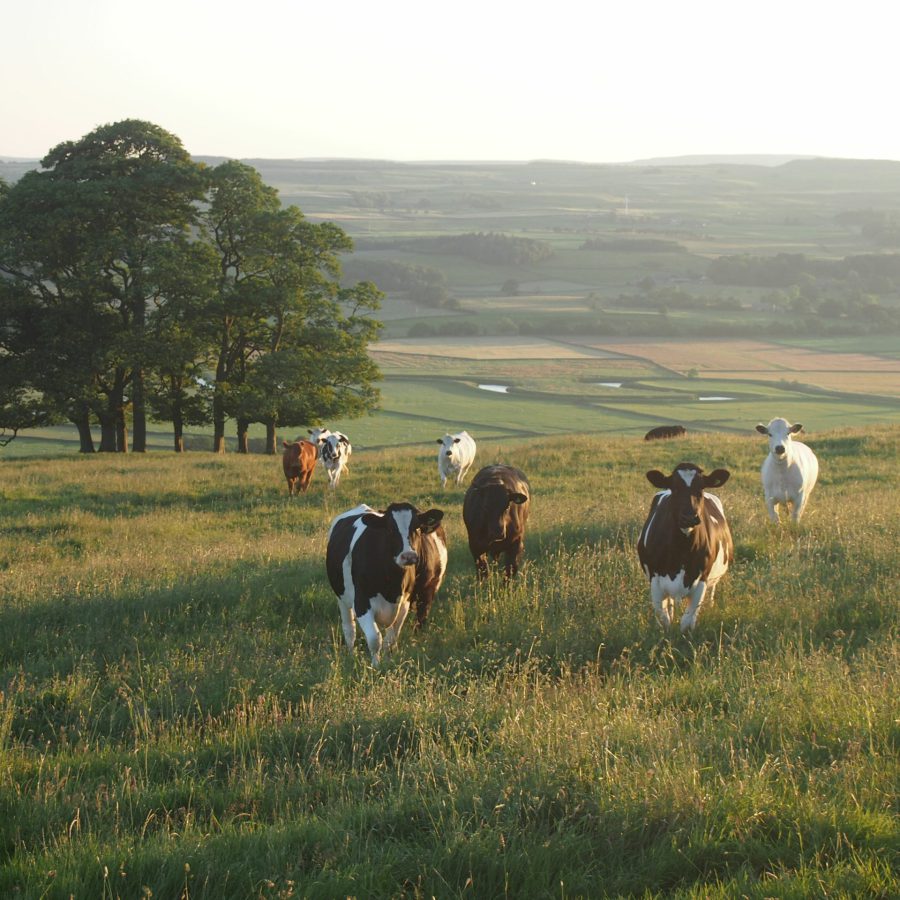Cows in a barren meadow? That view may be corrected.
nature
It is spring and that means the cows can go out to pasture again! That gives a typically Dutch picture: blue sky with sheep clouds, green meadows and black and white cows. But do cows belong in a barren meadow? Research by Rebel calls this image into question.
Almost a quarter of our scarce land consists of pasture used to produce grass for our cows. But however beautiful the farm landscape with its fresh green grass looks: it has hardly any nature value. For it consists almost entirely of English Raaigrass and there is no room for other species. And that is a problem, because since 1970 we have already lost 70% of our animals and plants. This puts us at risk of ruining our food system. The challenge is to reduce this risk without food production suffering.
Fortunately, there are positive indications. In fact, scientists indicate that cows like trees in pasture: the trees provide protection from heat, rain and wind. These weather extremes create stress and sheltering from them has a positive effect on cow welfare. In addition, stress causes reduced milk production. According to research, stress from extreme weather can reduce milk production by 10%. Moreover, the presence of trees increases biodiversity. For example, trees provide food and shelter for birds and insects. So looking at it this way, trees in the pasture is good for the cow, the farmer and nature.

In collaboration with the Floating Farm, Rebel took the test. Trees were placed in the meadow where the cows graze. TreeCollective fitted the trees with sensors and the cows with tags. This makes it possible to observe how often the cows come near the trees. Moreover, a researcher from Utrecht University has tracked how often the cows can be found in the shade of the trees. This should show whether the cows use the shelter of the trees. What turns out? On hot days, cows actively seek the shade of the trees. It was found that the most dominant cows were more likely to claim the scarce shade spots. This suggests that the shade spots are sought after. The findings suggest that cows experience less heat stress with trees in the pasture.
The Floating Farm has shown that economics and ecology do not have to get in the way of each other, they can actually reinforce each other. But that requires courage, innovation and ingenuity. Rebel helps to find earning models that are future-proof. This is done by finding smart solutions that help both nature and the economy, measuring and monitoring the value of these solutions. Want to know how to make nature value visible, measure it and how that leads to new business models?
Get in contact with Mark Bode
Bronnen
Zie CBS voor oppervlakte (link, geraadpleegd op 06-01-2023).
Zie tijdschrift De Levende Natuur (link, geraadpleegd op 06-01-2023) of Landbouw met natuur (link, geraadpleegd op 06-01-2023).
Zie WNF Living Planet Report 2022 (link, geraadpleegd op 06-01-2023).
Zie Food and Agriculture Organization (link, geraadpleegd op 06-01-2023).
Huertas, S.M.; Bobadilla, P.E.; Alcántara, I.; Akkermans, E.; van Eerdenburg, F.J.C.M. Benefits of Silvopastoral Systems for Keeping Beef Cattle. Animals 2021, 11, 992. https://doi.org/10.3390/ani11040992
De eerste drijvende boerderij ter wereld en heeft biodiversiteit hoog in het vaandel staan, kijk op floatingfarm.nl
M. Vugs & F.C.J.M van Eerdenburg (2022), The Utilization Of Shade During Heat Stress By Dairy Cattle. Op aanvraag verkrijgbaar.